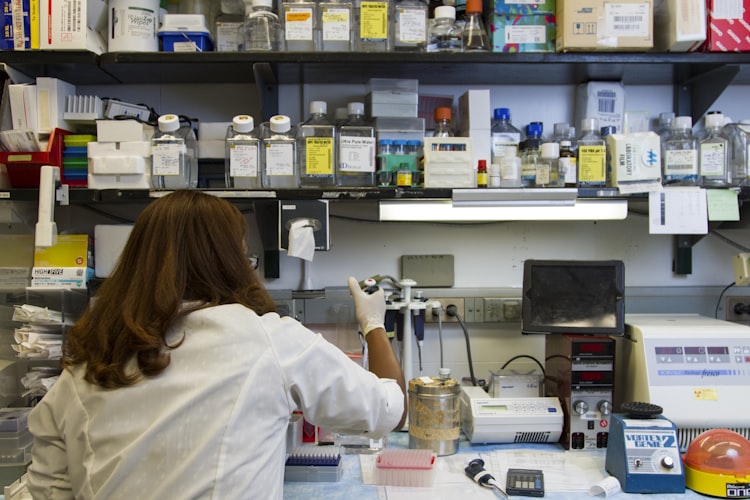PCR — Polymerase Chain Reaction
DNA Amplification
DNA ( Deoxyribose Nucleic Acid) is the genetic material. It helps to transfer genes from one generation to another generation. Many experiments are based on DNA. So its amplification is necessary for research for future use of DNA sample for testing.
PCR i.e. Polymerase Chain Reaction is a technique to amplify the DNA. It is an automated machine. This technique helps to generate large quantities of specified DNA. It is an amplification technique that can generate a billion copies of specified DNA.
Karry Mullis in 1984 developed a PCR technique. It is a basic technique in the molecular biology field. The principle of PCR technique based on three steps -
1. Denaturation
2. Renaturation
3. Synthesis or polymerases
The technical explanation of PCR step by step
Requirements
1.Target DNA 100-35,000 bp in length
2. Two primers 17-30 nucleotide in length
3. Four relevant deoxynucleotides
4. Enzyme Taq DNA polymerase
Step 1 Denaturation
DNA is double-stranded in nature. To amplify the DNA first of all separate out these two strands of DNA. The separation of the DNA strand is known as Denaturation. The denaturation process mainly occurs at a high temperature near about 95-degree Celcius.
Step -2 Renaturation and annealing
The addition of two primers at the complementary regions of target DNA is known as the renaturation or annealing process. This process occurs at a temperature of about 55 - degrees Celcius.
Step-3 Synthesis or Polymerases
While annealing of primers then initiation of DNA synthesis occurs at 3'-hydroxyl end of each primer. Then primer getting extended during this process temperature should be optimum required by Taq DNA polymerase.
* Taq DNA polymerase is an enzyme isolated from the bacterium Thermus aquaticus. It is a heat resistant enzyme. The optimum temperature is required for its activation around 75-degree Celcius. The unique property of this enzyme is there is not necessary to freshly add this enzyme for each cycle of PCR.
The reaction can be stopped by raising the temperature to about 95-degree Celcius.
Several cycles are repeated again to amplify the target DNA via following these three steps. .Each cycle of PCR takes about 3-5 minutes. It is estimated at the end of thirty-two cycles of PCR about a million-fold target DNA is synthesized.
The addition of protein such as Bovine Serum Albumin (BSA)enhances the capability of PCR by protecting the enzyme DNA Polymerase.
MODIFIED PCR
There are versatile techniques of PCR that are modified according to the demand depends upon situations. Here are some of them :
1. Nested PCR
2. Inverse PCR
3. Anchored PCR
4. Reverse Transcription PCR
5. Asymmetric PCR
6. Real-Time Quantitative PCR
7. Arbitrarily primed PCR
All of the above mentioned are the modification of basic PCR.
Application of PCR
1. Helpful in the diagnosis of various diseases in humans.
2. With the help of PCR genetic disease is frequently identified.
3.PCR technique is useful for the detection of a sex-linked disorder in fertilized embryos.
4. Helps in the diagnosis of Cancer.
5. PCR helps to monitor retroviral infections.
6. It is used to detect a bacterial infection.
7. PCR technique is conveniently used for sequencing.
8. Helps in the study of evolutionary biology.
9. PCR technique employed in the prenatal diagnosis of inherited disease.
10. This technique is very useful in forensic science.
Due to the PCR technique, it is possible to generate thousands to millions of copies of target DNA from a very small amount of DNA.

Comments
Post a Comment
Please do not enter any spam link in the comment box.